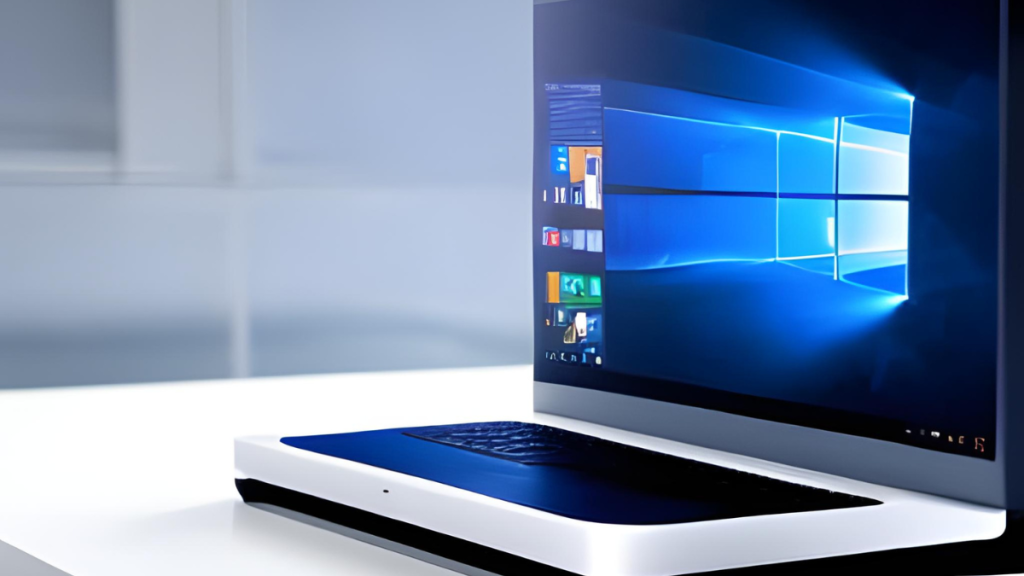TECNOLOGÍA Y CANALES DE DISTRIBUCIÓN
Acelera tu empresa con estos consejos de expertos que cuenta sobre «Tecnología y canales de distribución». ¡Analiza y descubre esta TIP!
La tecnología ha tenido un impacto significativo en los canales de distribución, transformando la forma en que las empresas llevan sus productos o servicios al mercado.
Algunos de los impactos más destacados son
- Comercio electrónico: El auge del comercio electrónico ha permitido que las empresas lleguen directamente a los consumidores a través de plataformas en línea. Esto ha eliminado la necesidad de intermediarios tradicionales y ha abierto nuevas oportunidades de venta.
- Marketplace y plataformas digitales: Las empresas ahora pueden utilizar marketplace y plataformas digitales para llegar a una amplia audiencia de clientes sin la necesidad de establecer su propia infraestructura de distribución. Estas plataformas facilitan la visibilidad y la venta de productos a nivel global.
- Logística y entrega: La tecnología ha mejorado la eficiencia y la rapidez en los procesos logísticos y de entrega. La implementación de sistemas de gestión de inventario, seguimiento de envíos y rastreo en tiempo real ha optimizado la cadena de suministro y ha reducido los tiempos de entrega.
- Automatización y robótica: La automatización y la robótica han revolucionado la logística y la distribución. Los robots y sistemas automatizados pueden realizar tareas repetitivas y de manejo de inventario de manera más rápida y precisa, lo que reduce los costos operativos y aumenta la eficiencia.
- Personalización y experiencia del cliente: La tecnología ha permitido a las empresas personalizar la experiencia del cliente en los canales de distribución. A través del análisis de datos y la implementación de tecnologías de inteligencia artificial, las empresas pueden ofrecer recomendaciones y ofertas personalizadas a los clientes, mejorando así su satisfacción y fidelidad.
En resumen, la tecnología ha transformado los canales de distribución al permitir a las empresas llegar directamente a los consumidores, mejorar la eficiencia logística, ampliar su alcance global y ofrecer experiencias personalizadas. Estos avances tecnológicos han generado cambios significativos en la forma en que las empresas distribuyen sus productos o servicios, abriendo nuevas oportunidades y desafíos en el mercado.
Aquí tienes algunos ejemplos prácticos de empresas conocidas que han experimentado el impacto de la tecnología en sus canales de distribución:
- Amazon: es un claro ejemplo de cómo la tecnología ha transformado los canales de distribución. A través de su plataforma en línea, han creado un gigante del comercio electrónico que ofrece una amplia gama de productos y servicios. Utilizan tecnologías avanzadas de logística y entrega, como drones y robots en sus almacenes, para agilizar la distribución de productos a nivel mundial.
- Uber: es una empresa de transporte que ha revolucionado la industria a través de la tecnología. Su plataforma de aplicación móvil conecta a los conductores y pasajeros, eliminando los intermediarios tradicionales. Han creado un nuevo canal de distribución para el transporte de personas, aprovechando la tecnología GPS y los pagos electrónicos.
- Netflix: ha cambiado la forma en que consumimos contenido audiovisual. A través de su plataforma de streaming, ofrecen una amplia variedad de películas y series, eliminando la necesidad de intermediarios como los cines o las tiendas de alquiler de DVD. Utilizan tecnología de transmisión en línea para llevar el contenido directamente a los hogares de los suscriptores.
- Airbnb: es una plataforma en línea que permite a las personas alquilar alojamientos de particulares. Han creado un nuevo canal de distribución para la industria hotelera, permitiendo a los propietarios de viviendas ofrecer sus espacios directamente a los viajeros. Utilizan tecnología de reserva en línea y sistemas de calificación para asegurar la calidad de los alojamientos.
- Tesla: es una empresa de automóviles eléctricos que ha aprovechado la tecnología para cambiar la forma en que se distribuyen los vehículos. Utilizan una red de tiendas propias y ventas en línea para llegar directamente a los clientes, evitando los concesionarios tradicionales. Además, su tecnología de carga rápida y red de estaciones de carga han facilitado la transición hacia los vehículos eléctricos.
Estos ejemplos ilustran cómo la tecnología ha permitido a estas empresas innovar en sus canales de distribución, alcanzar a los clientes de manera más eficiente y ofrecer experiencias personalizadas. Han utilizado la tecnología para eliminar intermediarios, mejorar la logística y ampliar su alcance, lo que les ha brindado una ventaja competitiva en el mercado.
Aplicar la tecnología a los canales de distribución puede brindar a una empresa varias ventajas competitivas
AQUÍ HAY ALGUNAS ESTRATEGIAS QUE PUEDEN AYUDAR A LOGRARLO:
- Mejora de la eficiencia logística: Utilizar tecnología como sistemas de gestión de inventario, rastreo de envíos en tiempo real y análisis de datos puede optimizar los procesos de distribución y reducir los tiempos de entrega. Esto permite a la empresa satisfacer las demandas de los clientes de manera más rápida y eficiente.
- Personalización de la experiencia del cliente: La tecnología permite recopilar y analizar datos sobre los clientes, lo que brinda información valiosa para personalizar la experiencia de compra. Al comprender las preferencias y necesidades individuales, se pueden ofrecer recomendaciones específicas y promociones personalizadas, lo que mejora la satisfacción del cliente y genera lealtad hacia la marca.
- Expansión de los canales de distribución: La tecnología ofrece diversas opciones para llegar a los clientes, como el comercio electrónico, las aplicaciones móviles y las plataformas de mercado en línea. Al ampliar los canales de distribución, una empresa puede llegar a un público más amplio y diversificado, expandiendo su alcance y aumentando las oportunidades de venta.
- Mejora de la comunicación y la colaboración: La tecnología facilita la comunicación y la colaboración tanto interna como externamente. El uso de herramientas de colaboración en línea, como software de gestión de proyectos y plataformas de comunicación en tiempo real, permite una mejor coordinación entre los diferentes actores de la cadena de distribución, lo que mejora la eficiencia y la toma de decisiones.
- Aprovechamiento de la analítica de datos: La tecnología permite recopilar y analizar grandes cantidades de datos sobre los clientes, los productos y los canales de distribución. Al aprovechar el análisis de datos, una empresa puede obtener información sobre las tendencias del mercado, identificar oportunidades de crecimiento y tomar decisiones basadas en datos para mejorar su desempeño en los canales de distribución.
En resumen, al aplicar la tecnología de manera estratégica a los canales de distribución, una empresa puede obtener una ventaja competitiva al mejorar la eficiencia, personalizar la experiencia del cliente, expandir su alcance, mejorar la comunicación y aprovechar el análisis de datos. Estas estrategias pueden ayudar a la empresa a diferenciarse de la competencia y satisfacer las demandas cambiantes de los clientes de manera más efectiva.
EL CHATGPT PUEDE AYUDARTE A ENCONTRAR LA TECNOLOGÍA ADECUADA PARA APLICAR EN EL CANAL DE DISTRIBUCIÓN DE TU EMPRESA Y MEJORAR SU COMPETITIVIDAD DE VARIAS MANERAS:
- Asesoramiento tecnológico: Puedes plantear tus necesidades y objetivos comerciales al ChatGPT, y te proporcionará información y recomendaciones sobre las tecnologías más relevantes y adecuadas para tu negocio en función de tu industria y tipo de canal de distribución.
- Análisis de casos de éxito: El ChatGPT puede brindarte ejemplos de empresas similares que hayan implementado tecnologías exitosas en sus canales de distribución. A través de estos casos de éxito, podrás obtener ideas y comprender cómo la tecnología puede impulsar la eficiencia y la competitividad en tu propio canal.
- Exploración de soluciones tecnológicas: Puedes solicitar al ChatGPT que te presente diferentes soluciones tecnológicas relacionadas con el canal de distribución, como sistemas de gestión de inventario, aplicaciones de logística, plataformas de comercio electrónico, entre otras. Obtendrás información sobre sus características, beneficios y consideraciones para tomar una decisión informada.
- Análisis de tendencias: El ChatGPT puede proporcionarte información actualizada sobre las últimas tendencias tecnológicas en el campo de la distribución. Te mantendrá al tanto de las nuevas herramientas, aplicaciones y prácticas que podrían mejorar la competitividad de tu empresa en el mercado.
- Evaluación de factibilidad: Puedes plantear tus restricciones o limitaciones, como presupuesto, recursos o requisitos específicos, y el ChatGPT puede ayudarte a evaluar la factibilidad de implementar determinadas tecnologías en tu canal de distribución. Te brindará recomendaciones adecuadas a tu situación particular.
Es importante tener en cuenta que el ChatGPT es un modelo de lenguaje basado en texto y no puede proporcionar asesoramiento específico ni reemplazar la experiencia y el análisis humano. Siempre es recomendable consultar con expertos y profesionales en tecnología y distribución para tomar decisiones informadas y personalizadas para tu empresa.
APLICA ESTE TIP EN TU PROYECTO
TAREA
CASO PRÁCTICO
Nombre del emprendedor: María
Descripción del caso: María es una emprendedora que ha desarrollado una tienda en línea de productos de belleza y cuidado personal. Como parte de su participación en un programa de aceleración, está buscando aplicar tecnología a su canal de distribución para conseguir una ventaja competitiva y mejorar la experiencia del cliente.
AQUÍ ESTÁ SU ENFOQUE ESTRATÉGICO:
- Implementación de un sitio web y una aplicación móvil: María decide crear un sitio web de comercio electrónico y una aplicación móvil para su tienda. Esto permite a los clientes navegar y comprar productos de forma conveniente desde cualquier dispositivo, lo que amplía su alcance y atrae a una audiencia más amplia.
- Personalización de la experiencia de compra: María utiliza herramientas de análisis de datos y seguimiento de clientes para recopilar información sobre las preferencias y necesidades de sus clientes. Con base en estos datos, implementa funciones de personalización en su plataforma, como recomendaciones de productos y ofertas especiales adaptadas a cada cliente, lo que mejora la experiencia de compra y fomenta la fidelidad de los clientes.
- Integración con servicios de entrega rápida: María establece asociaciones con servicios de entrega rápida para garantizar que los pedidos se entreguen de manera rápida y eficiente. Aprovecha la tecnología de seguimiento de envíos en tiempo real para brindar a los clientes información actualizada sobre el estado de sus paquetes, lo que genera confianza y satisfacción en el servicio.
- Uso de chatbots y asistencia virtual: María implementa un chatbot en su sitio web y aplicación móvil para brindar asistencia rápida y personalizada a los clientes. El chatbot responde preguntas frecuentes, ayuda en la selección de productos y procesa consultas y reclamaciones. Esto agiliza el servicio al cliente y proporciona respuestas inmediatas, mejorando la experiencia del usuario.
- Análisis de datos y toma de decisiones basada en datos: María utiliza herramientas de análisis de datos para monitorear y medir el desempeño de su canal de distribución. Analiza métricas como la tasa de conversión, el tiempo de carga del sitio web y el comportamiento del usuario para identificar oportunidades de mejora y tomar decisiones informadas sobre estrategias de marketing, mejoras en la experiencia del cliente y la selección de productos.
A medida que María implementa estas tecnologías en su canal de distribución, observa un aumento en las ventas, la fidelidad de los clientes y la eficiencia operativa. Su enfoque en la personalización, la entrega rápida y la asistencia virtual la distingue de la competencia y establece su tienda en línea como un destino preferido para los consumidores en busca de productos de belleza y cuidado personal.
QUIZ
- 💻 PRACTICA con un experto en el próximo webinar práctico.
- 🔎 CONSULTA más TIPs relacionadas con este mismo tema.
- 📖 AMPLIA tus conocimientos descargando este EBOOK.
PIENSA EN TI
- 🚀 IMPULSA tu empresa en el próximo programa de aceleración, ¡reserva tu plaza ya!.
- 🥁 PRACTICA con tu proyecto en este webinar práctico, ¡solicita tu plaza!.
- 🌐 CONTACTA con otros emprendedores y empresas, ¡inscríbete y participa en el próximo Networking!.
PIENSA EN AYUDAR A LOS DEMÁS
- 🤝COLABORA como voluntario: experto, mentor, inversor, premiando, difundiendo, retando, innovando, creando una TIP…
- 💬 RECOMIENDA este programa para que llegue a más emprendedores por Google.
- 👉 ¡COMPARTE tu aprendizaje!
- 📲 REENVÍA esta TIP 👇








